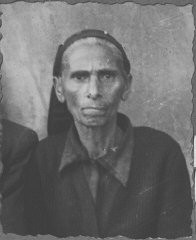You searched for: %E7%BE%8E%E5%A5%B3%E5%9D%90%E8%84%B8%E9%97%B7%E6%AD%BB%E5%B0%8F%E5%81%B7%E3%80%90%E5%A4%8D%E5%88%B6%E8%BE%93%E5%85%A5%E2%88%B6578636.com%E3%80%91%E7%A9%BA%E9%99%8D%E6%A8%A1%E7%89%B9%E7%BA%A6PAO%E3%80%91%E7%8E%89%E6%BA%AA%E5%B8%82%E5%93%AA%E4%BA%9B%E5%9C%B0%E6%96%B9%E9%9F%A9%E5%9B%BD%E7%BA%A6PAO%E3%80%91%E5%A4%A7%E5%AD%A6%E7%BE%8E%E5%A5%B3%E6%B4%97%E6%BE%A1%20magnet%E3%80%90%E9%80%89%E7%BE%8E%E5%A5%B3%E2%88%B6578636.com%E3%80%91%E5%85%A8%E7%90%83%E8%89%BA%E4%BA%BA%E5%85%A8%E5%A5%97%E3%80%91%E6%9F%B3%E5%8D%97%E5%8C%BA%E5%8E%BB%E9%82%A3%E5%B0%8F%E5%A6%B9%E4%BF%AE%E8%BD%A6%E3%80%91gfa1i76cb
<< Previous | Displaying results 26-50 of 222 for "%E7%BE%8E%E5%A5%B3%E5%9D%90%E8%84%B8%E9%97%B7%E6%AD%BB%E5%B0%8F%E5%81%B7%E3%80%90%E5%A4%8D%E5%88%B6%E8%BE%93%E5%85%A5%E2%88%B6578636.com%E3%80%91%E7%A9%BA%E9%99%8D%E6%A8%A1%E7%89%B9%E7%BA%A6PAO%E3%80%91%E7%8E%89%E6%BA%AA%E5%B8%82%E5%93%AA%E4%BA%9B%E5%9C%B0%E6%96%B9%E9%9F%A9%E5%9B%BD%E7%BA%A6PAO%E3%80%91%E5%A4%A7%E5%AD%A6%E7%BE%8E%E5%A5%B3%E6%B4%97%E6%BE%A1%20magnet%E3%80%90%E9%80%89%E7%BE%8E%E5%A5%B3%E2%88%B6578636.com%E3%80%91%E5%85%A8%E7%90%83%E8%89%BA%E4%BA%BA%E5%85%A8%E5%A5%97%E3%80%91%E6%9F%B3%E5%8D%97%E5%8C%BA%E5%8E%BB%E9%82%A3%E5%B0%8F%E5%A6%B9%E4%BF%AE%E8%BD%A6%E3%80%91gfa1i76cb" | Next >>
-
The 83rd Infantry Division during World War II
ArticleThe 83rd Infantry Division participated in major WWII campaigns and is recognized for liberating the Langenstein subcamp of Buchenwald in 1945.
-
The Malmedy Massacre
ArticleOn December 17, 1944, one day after the beginning of the Battle of the Bulge, a Waffen SS unit captured and murdered 84 US soldiers. This atrocity is known as the “Malmedy Massacre.”

-
Gross-Rosen
Media EssayGross-Rosen became an independent concentration camp in 1941. The camp eventually expanded to become the center of an industrial complex and to include a vast network of at least 97 subcamps.
-
Chelmno
ArticleThe Chelmno killing center was the first stationary facility where poison gas was used for mass murder of Jews. Killing operations began there in December 1941.

-
Berga-Elster ("Schwalbe V")
ArticleAt the Berga-Elster subcamp of Buchenwald, prisoners were forced to do dangerous and brutal work in tunnels to support fuel production for the German war effort.

-
Stanisławów
ArticleLearn more about the history of Stanisławów during the Holocaust and World War II.
-
Maria Nemeth
ID CardMaria's parents lived in Szentes, a town in southeastern Hungary, located 30 miles from the city of Szeged. Her mother, Barbara, was born in the neighboring town of Hodmezovasarhely, but moved to Szentes when she married. Maria's father was a dentist. 1933-39: Maria was born in 1932. In 1937 her mother took in a young Austrian woman who lived with the family and helped Maria learn German. 1940-44: In March 1944 German troops occupied Hungary. Members of the Hungarian fascist party, Arrow Cross,…

-
Nazi Rule
ArticleAfter they rose to power in 1933, Hitler and the Nazis eliminated democratic freedoms and took control of all aspects of public life in Germany. Learn more.

-

-
Gross-Rosen - Maps
Media EssayGross-Rosen became an independent concentration camp in 1941. The camp eventually expanded to become the center of an industrial complex and to include a vast network of at least 97 subcamps.
-
Jimmy Carter, Thomas Buergenthal, and Andrew Young
PhotoFrom left to right: former US President Jimmy Carter, Judge Thomas Buergenthal, former UN ambassador Andrew Young. Judge Buergenthal was the director of the human rights program for the Carter Center from 1986–89.

-
Portrait of Ester Eschkenasi
PhotoPortrait of Ester Eschkenasi, wife of Sava Eschkenasi. She lived at Karagoryeva 91 in Bitola. This photograph was one of the individual and family portraits of members of the Jewish community of Bitola, Macedonia, used by Bulgarian occupation authorities to register the Jewish population prior to its deportation in March 1943.

-
Judge Thomas Buergenthal with members of the Inter-American Court of Justice
PhotoJudge Thomas Buergenthal (front row, right) with other members of the Inter-American Court of Justice in San Jose, Costa Rica. Thomas served from 1979–91 and was president from 1985-1987. San Jose, Costa Rica, 1980.

-
Belzec
ArticleBelzec was the first of three killing centers in Operation Reinhard, the SS plan to murder almost two million Jews living in the German-administered territory of occupied Poland.

-
Börgermoor Camp
ArticleBörgermoor was part of the Nazi regime’s early system of concentration camps. It was located in the Emsland region of Prussia.
-
Hana Mueller Bruml describes her deportation to and arrival at Theresienstadt
Oral HistoryIn 1942, Hana was confined with other Jews to the Theresienstadt ghetto, where she worked as a nurse. There, amid epidemics and poverty, residents held operas, debates, and poetry readings. In 1944, she was deported to Auschwitz. After a month there, she was sent to Sackisch, a Gross-Rosen subcamp, where she made airplane parts at forced labor. She was liberated in May 1945.

-
Uckermark Youth Camp
ArticleThe Uckermark camp was one of the so-called youth protection camps that the Nazi regime established for young people who were alleged to have strayed from Nazi norms and ideals.
-
Mannschafts-Stammlager (Stalag) IX B
ArticleIn 1939, the Nazis established the Mannschafts-Stammlager (Stalag) IX B camp in Germany. Learn more about the camp’s history, prisoners, and liberation.
-
"Kristallnacht": nationwide pogrom
MapKristallnacht—literally, "Crystal Night"—is usually translated from German as the "Night of Broken Glass." It refers to the violent anti-Jewish pogrom of November 9 and 10, 1938. The pogrom occurred throughout Germany, which by then included both Austria and the Sudetenland region of Czechoslovakia. Hundreds of synagogues and Jewish institutions all over the German Reich were attacked, vandalized, looted, and destroyed. Many were set ablaze. Firemen were instructed to let the synagogues burn but to…

-
The Weimar Republic
ArticleThe Weimar Republic was a liberal democratic republic founded in Germany in the aftermath of WWI. Learn about the era’s political and economic crises and social trends.

-
Neuengamme
ArticleIn 1938, the Nazis established Neuengamme concentration camp. Learn more about camp conditions, medical experiments, and liberation.

-
Jeno Muhlrad
ID CardJeno was the youngest of five children born to Jewish parents living in a suburb of Budapest. His father was a wholesale merchant who sold beer to restaurants and stores. After receiving a university diploma, Jeno became a pharmacist. He and his wife, Aranka, and their two children, Eva and Andras, shared a large old house in Ujpest with Jeno's father and other members of the extended family. 1933-39: Jeno's friends and family have helped him raise the large amount of money he needs to lease his own…

-
Dora Unger
ID CardDora, her parents, brother, aunt, uncle, and two cousins lived together in her grandfather's home in Essen, Germany. The Ungers were an observant Jewish family, and when Dora was 8, she began to regularly attend meetings of Brit HaNoar, a religious youth organization. 1933-39: In October 1938 a teacher, with tears in her eyes, came to Dora at the municipal pool, saying "Jews cannot swim here anymore." Just weeks later, on November 9, Jews were arrested and their property destroyed. A neighbor tried to…

-
Jeno Nemeth
ID CardJeno moved to Szentes from a tiny farming community near the city of Szolnok, where he and his two brothers had been born to Jewish parents. Jeno owned a store that carried groceries and hardware items. He lived in the southeast Hungarian town of Szentes. Jeno and his wife, Juliana, had two married daughters, Barbara and Margit. Their son, Desider, was a dentist in Szentes. 1933-39: Jeno and his wife work hard in their store. The Depression of the 1930s was devastating, but things are starting to get a…

-
Ravensbrück
ArticleLearn about conditions and the treatment of prisoners in Ravensbrück, the largest concentration camp for women in the German Reich.

